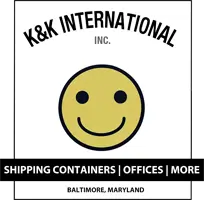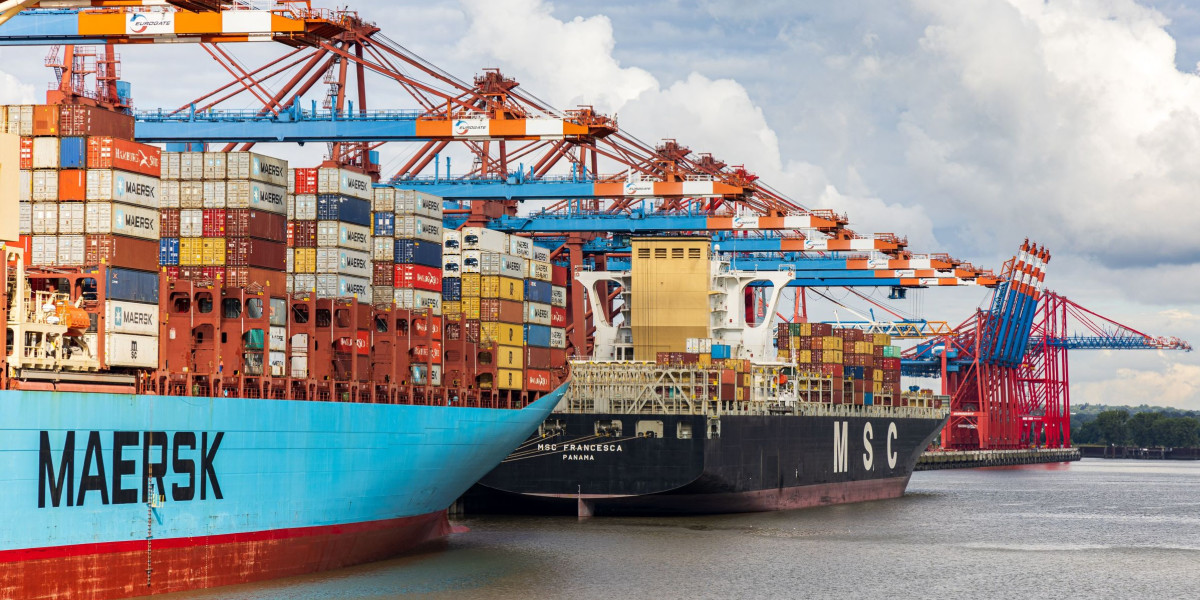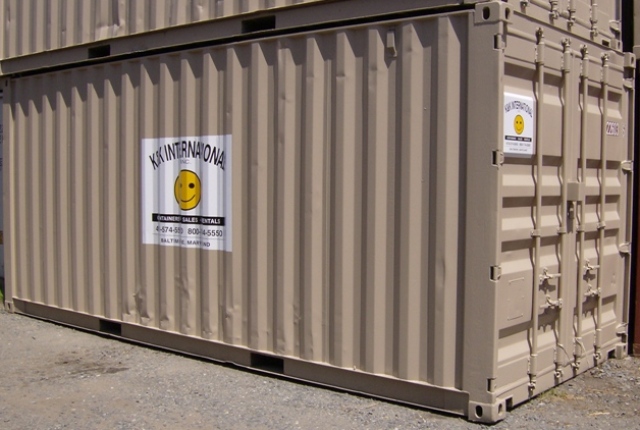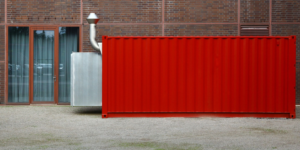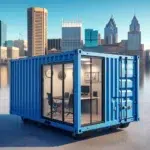Container modification is a growing trend in architecture that involves repurposing shipping containers for various purposes, such as gyms, offices, restaurants, medical pop-up stations, and retail stores.
This innovative approach to design offers numerous benefits, including cost-effectiveness, durability, flexibility, and sustainability. By transforming these steel structures into customized spaces, architects and designers are able to create unique and functional structures that are not only visually appealing but also environmentally friendly.
Let’s take a deeper look at the shipping container customization process.
Benefits of Using Shipping Containers for Customized Spaces
One of the main advantages of using shipping containers for customized spaces is their cost-effectiveness. Compared to traditional construction methods, container modification can be significantly cheaper. The cost of purchasing and modifying a shipping container is often much lower than building a structure from scratch. Additionally, the construction process is typically faster, resulting in reduced labor costs.
Shipping containers are also known for their durability and strength. Made from corten steel, these containers are designed to withstand harsh weather conditions and heavy loads. This makes them ideal for various applications, including residential and commercial structures. With proper insulation and reinforcement, shipping containers can provide a safe and secure living or working environment.
Another benefit of container modification is the flexibility it offers in terms of design and customization options. Shipping containers can be easily modified to fit specific requirements and preferences. They can be stacked or joined together to create larger spaces or divided into smaller units for different purposes. The interior and exterior can be customized with various materials, such as wood, metal, or glass, to achieve the desired aesthetic.
Shipping containers are highly mobile and portable, making them suitable for both temporary and permanent structures. They can be easily transported to different locations, allowing for flexibility in terms of site selection. This makes them an ideal choice for projects that require mobility or temporary solutions.
The Art of Container Modification: Designing and Planning
Proper planning and design are critical for successful container modification projects. It is important to collaborate with architects, engineers, and contractors to ensure that the design meets all safety and structural requirements. This involves considering factors such as site preparation, permits, and regulations.
Before starting the modification process, it’s vital to closely assess the site where the container will be placed. This includes evaluating the ground conditions, accessibility, and any potential obstacles or restrictions. Site preparation may involve leveling the ground, installing a foundation, or making necessary adjustments to accommodate the container.
Obtaining the necessary permits and complying with local regulations is another important step in the planning process. Depending on the location and purpose of the structure, there may be specific requirements that need to be met. This may include obtaining building permits, adhering to zoning regulations, or meeting safety standards.
Collaboration between architects, engineers, and contractors is essential to ensure that the design is structurally sound and meets all safety requirements. Architects are responsible for creating a functional and aesthetically pleasing design that maximizes the potential of the shipping container. Engineers play a crucial role in assessing the structural integrity of the container and providing solutions for reinforcement if needed. Contractors are responsible for executing the design and ensuring that all modifications are done correctly.
From Shipping Container to Customized Space: The Transformation Process
The transformation process of a shipping container into a customized space involves several steps, including cutting, welding, and insulation. These steps require specialized skills and equipment to ensure that the modifications are done safely and effectively.
- The first step in the transformation process is cutting openings for doors, windows, and other desired features. This requires precision and careful planning to ensure that the structural integrity of the container is not compromised. Once the openings are cut, they can be reinforced with steel frames or other materials to provide additional support.
- Welding is another important step in container modification. It involves joining multiple containers together or adding additional structures, such as roofs or balconies. Welding requires skilled professionals who are experienced in working with steel structures. It is important to ensure that all welds are done correctly to maintain the structural integrity of the container.
- Insulation is a crucial step in container modification, especially for residential or commercial structures. Proper insulation helps regulate temperature, reduce energy consumption, and provide a comfortable living or working environment. There are various insulation options available, including spray foam insulation, rigid foam insulation, and insulated panels.
Challenges may arise during the transformation process, such as dealing with rust or corrosion, addressing structural weaknesses, or finding suitable solutions for plumbing and electrical systems. However, with proper planning and the expertise of professionals, these challenges can be overcome.
Design Options for Container Modification: Interior and Exterior
Container modification offers endless possibilities for creative design options both on the interior and exterior of the structure. By incorporating different materials and design elements, architects and designers can create unique and visually appealing spaces.
- On the exterior, shipping containers can be customized with various materials to achieve the desired aesthetic. Wood cladding can be added to create a warm and inviting look, while metal panels can give a more industrial or modern feel. Glass windows and doors can be installed to bring in natural light and provide a connection to the surrounding environment.
- The interior of a shipping container can also be customized to fit specific needs and preferences. The layout can be designed to maximize space efficiency and functionality. Walls can be added or removed to create separate rooms or open-concept spaces. Custom furniture and fixtures can be built to fit the dimensions of the container.
- Incorporating natural light and ventilation is another important aspect of container modification. Skylights, windows, and glass doors can be strategically placed to allow for ample natural light during the day. Ventilation systems can be installed to ensure proper air circulation and temperature control.
Container Modification for Commercial Spaces: Offices, Retail Stores, and Restaurants
Container modification is not limited to residential structures; it is also being used for various commercial purposes, such as offices, retail stores, and restaurants. The benefits of using shipping containers for commercial structures include cost-effectiveness, mobility, and flexibility in design.
Container offices offer a cost-effective and flexible solution for businesses. They can be easily transported to different locations, allowing for flexibility in terms of site selection. Container offices can be customized to fit specific needs and preferences, with options for open-concept spaces or separate rooms.
Retail stores and restaurants can also benefit from container modification. Shipping containers provide a unique and eye-catching design that can help attract customers. They can be customized with branding elements, such as logos or signage, to create a cohesive and memorable brand experience.
Design considerations for commercial spaces include branding, customer experience, and functionality. Make sure you’re creating a space that reflects the brand identity and values of your business. The layout should be designed to provide a seamless and enjoyable customer experience. Functionality is also crucial, with considerations for storage, display areas, and seating arrangements.
Container Modification for Public Spaces: Libraries, Museums, and Art Galleries
Container modification is not limited to residential and commercial structures; it is also being used for various public spaces, such as libraries, museums, and art galleries. The advantages of using shipping containers for public structures include cost-effectiveness, mobility, and flexibility in design.
Container libraries offer a unique and sustainable solution for communities that lack traditional library facilities. These libraries can be easily transported to different locations, allowing for accessibility in underserved areas. They can be customized with shelving units, seating areas, and study spaces to provide a comfortable and functional environment for learning.
Museums and art galleries can also benefit from container modification. Shipping containers provide a versatile and customizable space for displaying artwork or exhibits. They can be easily transformed into gallery spaces with proper lighting, climate control systems, and display walls.
Design considerations for public spaces include accessibility, community engagement, and functionality. Design a space that’s accessible to all individuals, including those with disabilities. Community engagement should also be considered, with options for interactive exhibits or community events. Functionality is crucial, with considerations for storage, display areas, and seating arrangements.
Sustainable Design: Transforming Containers into Eco-Friendly Spaces
Sustainable design is an important aspect of container modification. By repurposing shipping containers, architects and designers are able to create eco-friendly structures that minimize waste and reduce the carbon footprint.
- One of the key elements of sustainable design in container modification is the use of renewable energy sources. Solar panels can be installed on the roof of your container to generate electricity. This allows for a more sustainable and cost-effective energy solution, reducing reliance on traditional power sources.
- Green materials can also be used in container modification to promote sustainability. This includes using recycled or reclaimed materials for insulation, flooring, and finishes. Low volatile organic compound (VOC) paints and adhesives can be used to improve indoor air quality.
- Container structures can also be designed to maximize natural light and ventilation. Skylights, windows, and glass doors can be strategically placed to allow for ample natural light during the day. Ventilation systems can be designed to take advantage of natural airflow and reduce the need for artificial cooling or heating.
The Future of Container Modification: Innovative Ideas and Trends
The future of container modification holds exciting possibilities for innovative ideas and trends in sustainable architecture. Emerging trends include the following:
- Modular designs involve using multiple containers that can be easily joined together or stacked to create larger structures. This allows for flexibility in terms of size and configuration, making it easier to adapt to different needs or expand the structure in the future.
- Smart technology integration involves incorporating advanced technology systems into container structures. This includes automation systems for lighting, temperature control, and security. Smart technology can help improve energy efficiency, enhance comfort, and provide a seamless user experience.
- Container modification also has potential in disaster relief and emergency housing. Shipping containers can be quickly deployed to provide temporary shelter for those affected by natural disasters or other emergencies. They can be easily transported to remote or inaccessible areas, providing a quick and cost-effective solution.
Commonly Asked Questions About Shipping Container Customization
What is shipping container customization?
Shipping container customization refers to the process of modifying a shipping container to meet specific requirements or preferences. This can include adding windows, doors, insulation, electrical wiring, plumbing, and other features.
What are the benefits of shipping container customization?
Customizing a shipping container can provide a cost-effective and sustainable solution for a variety of purposes, such as housing, offices, storage, and retail spaces. It also allows for flexibility in design and can be easily transported to different locations.
What types of modifications can be made to a shipping container?
Modifications can range from simple cosmetic changes, such as painting or adding decals, to more complex alterations, such as cutting out sections for windows and doors, installing insulation, and adding electrical and plumbing systems.
What are the costs associated with shipping container customization?
The cost of customization depends on the extent of the modifications and the materials used. Simple modifications, such as painting or adding a few windows, can cost a few thousand dollars, while more complex modifications, such as adding plumbing and electrical systems, can cost tens of thousands of dollars.
What are the legal requirements for shipping container customization?
The legal requirements for shipping container customization vary depending on the location and intended use of the container. It is important to check with local authorities and obtain any necessary permits before making modifications.
Where can I find companies that specialize in shipping container customization?
There are many companies that specialize in shipping container customization. A simple online search can provide a list of companies in your area. It is important to research and compare companies to ensure they have the necessary experience and expertise to meet your specific needs.
Getting the Customized Container of Your Dreams
Container modification can be used to create comfortable and functional residential spaces, as well as eye-catching commercial structures and engaging public spaces. There’s also never been a better time than now to start your container project!
Need to start your container project this month? Call our team now for a fast, detailed quote. We’re happy to answer any questions you may have, as well. Request your quote today!
